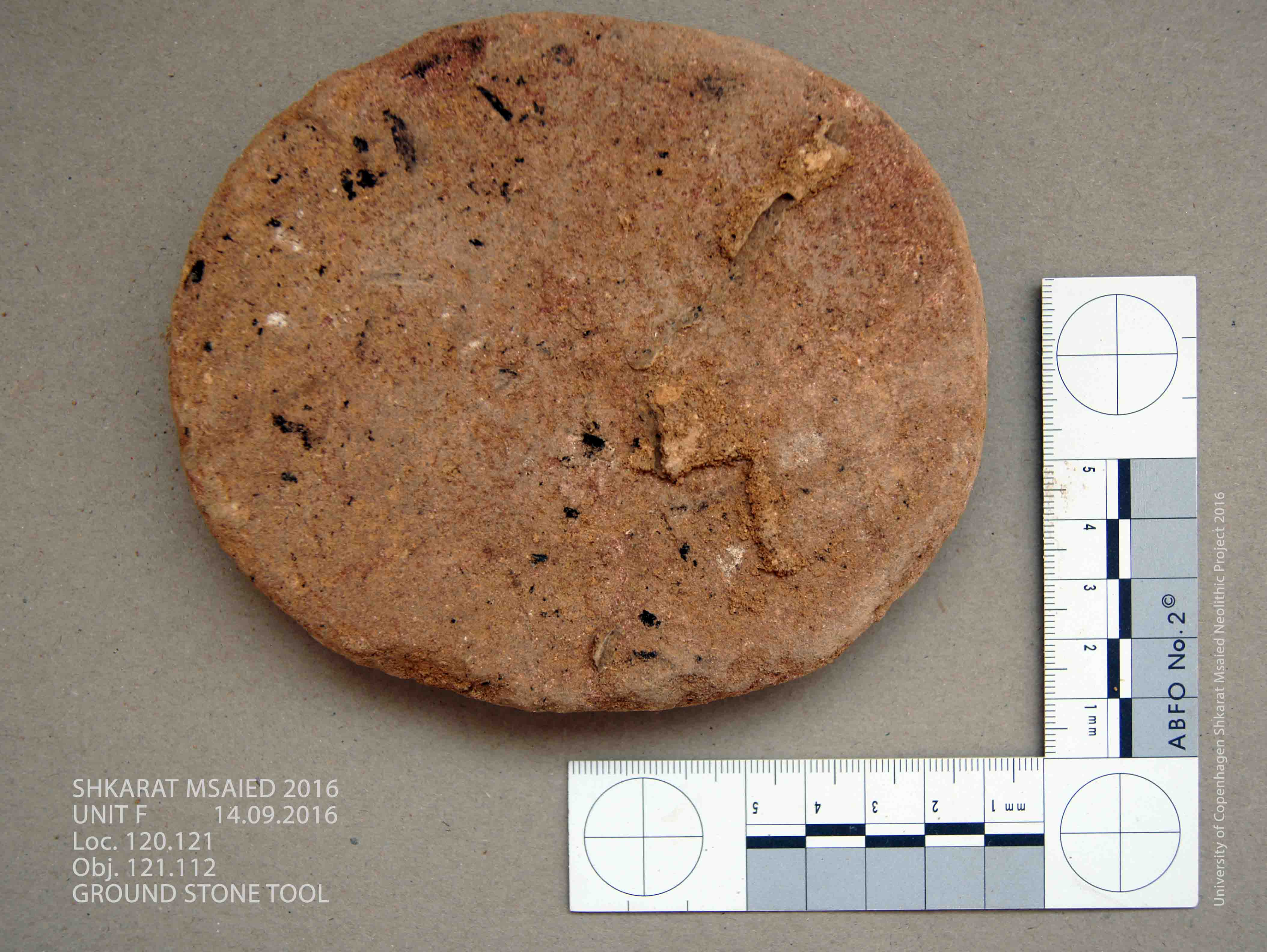
Ground stone tools
The ground stone assemblage from the MPPNB site Shkarat Msaied is quite rich. 12 main categories (excluding miscellaneous and unidentified objects) and 56 subtypes can be identified. The research results of the ground stone assemblage revealed a diverse set of artefacts which may have fulfilled a variety of functions, as well as interacted with the daily life of the inhabitants.
Ground stone artefacts could be used in food preparation and processing, pigment processing, tool manufacturing and maintenance, plaster production as well as activities related to ceremonial events.
Generally similarities are evident in the ground stone assemblage from Shkarat Msaied and the neighbouring site Beidha, whereas Ayn Abu Nukhayla deviates slightly from the pattern observed in the two former sites. It was argued that variation within the material tool groups and tool types might reflect variations in food choices, preparation techniques, subsistence strategy and/or differences in craftsmanship.
Through intra-site spatial analysis of the ground stone tools it can be demonstrated that production activities involving ground stone artefacts were mainly carried out in the semi-domestic, non-domestic and open areas/production areas. Furthermore, the distribution of the ground stone artefacts on the floor or in the layers just above the floor might indicate that cleaning activities were carried out in some of the buildings, as the majority of the tools were located along the walls.
A comparative analysis of the stone assemblage from Ayn Abu Nukhayla and Beidha showed that similar distribution patterns were evident in these two sites, as the artefacts were clustered and situated in the periphery of the buildings.
Although the majority of the ground stone artefacts were regarded as part of the essential domestic tool kit for food processing and tool manufacturing, the ground stone artefacts from Shkarat Msaied were not restricted to utilitarian functions. Some artefacts were selected and given new functions and presumably new social roles during their use-life.
Please contact cand.mag Anne Mette Harpelund for further enquiries.
Reference
Harpelund, A.M., 2011. An analysis of the ground stone assemblage from the Middle Pre-Pottery Neolithic B site Shkarat Msaied in Southern Jordan. MA-thesis, University of Copenhagen.
